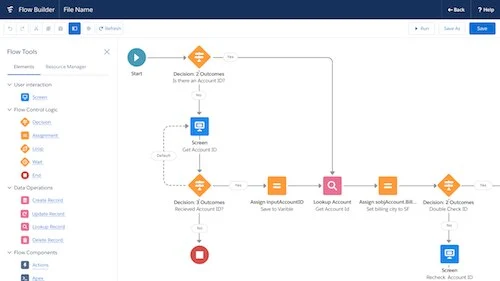In the world of technology and business, acronyms are like a secret code that experts use to communicate complex ideas in a concise manner. Salesforce, a leading customer relationship management (CRM) platform, also has its fair share of acronyms that might puzzle newcomers. But fear not! In this blog post, we’ll decode the most common Salesforce acronyms, ensuring that even a primary school student can understand them. So, let’s dive right in!
Understanding Salesforce Acronyms Made Easy
What’s Salesforce?
Before we delve into the acronyms, let’s grasp the basics. Salesforce is a powerful computer system that helps businesses manage their interactions and relationships with customers and potential customers. It’s like a digital assistant for companies, ensuring they can provide top-notch service.
Decoding Common Salesforce Acronyms
- CRM: Customer Relationship Management. This is the heart of Salesforce, where all customer data and interactions are stored.
- SaaS: Software as a Service. Imagine buying a toy without keeping it forever. SaaS is similar – you use the software without owning it.
- API: Application Programming Interface. Think of it as a translator that allows different apps to talk to each other.
- ERP: Enterprise Resource Planning. This helps companies plan how to use their resources wisely.
- FAQ: Frequently Asked Questions. These are the questions people ask a lot, compiled in one place.
Salesforce Tools Demystified
CRM: Customer Relationship Management
Salesforce’s CRM tool is like a superhero’s sidekick. It keeps track of all the interactions a company has with its customers. From calls and emails to purchases, everything’s in one place. This helps companies understand their customers better and provide them with what they need.
SaaS: Software as a Service
Imagine you’re building a sandcastle. Instead of making all the tools, you rent them – that’s SaaS. With Salesforce as SaaS, businesses don’t worry about setting up servers or updating software. They can focus on using the tools to make customers happy.
API: Application Programming Interface
Have you seen how different building blocks fit together? APIs do the same, but with software. They let different apps share information and work together. For example, when you share a picture from an app to a social media platform, you’re using an API.
ERP: Enterprise Resource Planning
Running a company is like solving a big puzzle. ERP software helps put the pieces together. It helps businesses plan how to use their money, materials, and people to work efficiently. So, when you buy a toy online and it arrives on time, ERP might have lent a helping hand.
Answering FAQs: Your Questions, Simplified
What’s the Cloud?
Imagine your favorite game magically saves your progress without using your toy’s memory. That’s the Cloud! It’s like a super storage space that’s not in your room but can be reached through the internet.
How does Salesforce help companies?
Salesforce is like a super organizer. It keeps track of who buys what, when they need help, and how to make them smile. This helps companies make their customers happy and do better business.
Is Salesforce only for big companies?
Nope, it’s for everyone! Whether you’re selling cookies or rocket ships, Salesforce can help you keep track of things. It’s like a backpack for your business stuff.
Making Sense of it All
Understanding Salesforce acronyms is like solving word puzzles. Once you know the tricks, they’re easy to decode. Just remember, CRM is the superhero’s helper, SaaS is like renting tools, API is the app translator, and ERP is the puzzle solver. And with FAQs, you’re all set to take on the world of Salesforce!
In conclusion, Salesforce acronyms might seem like a secret code at first, but they’re just ways to make complicated ideas simpler. With this guide, even a primary school student can grasp the basics of Salesforce and its acronyms. So, whether you’re a business owner or just someone curious about technology, you’re now equipped with the knowledge to navigate the world of Salesforce like a pro!
Remember, if you’re ever stuck, you can refer back to this guide and demystify those acronyms with ease.




